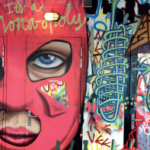What is relapse?
1. Relapse is a part of recovering from chronic substance misuse
Addictive alcohol and other drug use is defined as a “chronic and relapsing”.
It requires sustained, long-term management to allow recovery, just like any other chronic condition.
Relapse, or multiple relapses, can be an integral part of working towards recovery.
Recovery is possible
It’s important to remember that recovery—the move towards connectedness, hope, identity, meaning in life and empowerment—is possible, even if recovery from addiction is a process of management rather than cure.
It’s about management rather than cure
To use the example of a chronic illness such as asthma or hypertension, you would not expect to be able to cure these conditions in either the long or the short term.
Rather, the process of facilitating alcohol and other drug recovery is a process of management over the long term.
And, just like with any other chronic condition, the process of appropriate management can have ebbs and flows and these can often include relapse.
In fact, the evidence shows that relapse is an integral part of recovering from chronic substance misuse.
Relapse, just like substance use, is subjective
Just like the triggers for substance use, the triggers for relapse are subjective.
A person may finally be able to achieve his or her drug or other alcohol goal after two attempts.
Other people may take as many as five, six or even more attempts.
Managing recovery has to meet the specific needs of the person who is trying to formulate the goal.
II. Relapse relates to alcohol and other drug goals
An essential first step in reducing harm is to develop a clear alcohol or other drug goal that focuses on reducing or ceasing substance use.
For instance, a person deciding to quit cigarette smoking may develop a goal about avoiding situations that often lead him or her to smoke.
A relapse occurs when a person ceases to maintain his or her goal of substance reduction or avoidance and returns to pre-treatment levels of use.
Again, this is not to suggest that recovery is not possible, but rather it can take several attempts to get the right management strategies to maintain an alcohol and other drug goal in the long term.
III. Relapse is distinct from a lapse
A relapse is distinct from a lapse, which can be described as a temporary departure from alcohol and other drugs goals followed by a return to these original goals.
For instance, a person who has set a goal for herself of abstaining from alcohol may end up drinking a glass of wine at a party, only to return to her alcohol and other drug goal the following day.
The degree of substance use can vary within a lapse, but what differentiates a lapse from a relapse is the brief period of return to substance use and clear return to alcohol and other drug goals.
Why does relapse happen?
There are many circumstances that could encourage the person to relapse.
The evidence suggests a strong correlation between problematic alcohol or substance use and interpersonal or professional challenges, enduring emotional and psychological issues or socioeconomic stressors such as ongoing financial hardship, rejection by social support networks and challenges in interpersonal relationships.
Much like addictive behaviours themselves, the process of recovery—and the reasons for relapse—can be highly subjective.
Relapses are not a sign that the person is “weak” or a “failure” in attaining his or her alcohol and other drugs goal. They are merely a continuation of old coping patterns that need to be replaced with new ones.
Causes of relapse
- Recurrence of temptation scenarios. For instance, circumstances where the person would previously have used alcohol or another drug.
- Recurring challenges that act as a trigger for substance use as a coping strategy. These circumstances include insecure housing, professional or interpersonal setbacks, social pressures or social stigma.
- Pre-existing mental health or emotional issues. The evidence suggests a co-occurrence of problematic substance use and issues around psychological wellbeing.
- Pre-existing physical health issues. Physical ill-health can be a driver for pharmaceutical misuse, particularly in instances of persistent pain. Unless more effective interventions are found, this will continue to be a risk factor for relapse.
Remember:
- Addiction is a chronic condition.
- Addiction has social, psychological and physical dimensions and it requires the right mix of strategies to address it over a prolonged period of time. This is true of all chronic conditions, for instance non-malignant respiratory issues and symptoms associated with persistent physical pain.
- Because addiction has to be managed to facilitate recovery, it can take time to find the right mix of strategies.
- There is no “quick fix” to some of the underlying issues that can cause people to misuse alcohol and other drugs.
- The evidence is strongly in favour of some evidence-based strategies to aid recovery but every person’s experience of recovery—and addiction—is different.
- The evidence suggests that problematic drug-related behaviours are often seen alongside persistent emotional, mental and physical health issues.
What to do when relapse occurs
Managing relapse is part of the long-term strategy of facilitating alcohol and other drug recovery. The solutions are therefore both immediate and also focused on long-term behavioural changes and outcomes.
Immediate strategies for managing relapse
- Ensuring, if possible, that you have physical proximity of support people at the time of relapse to help minimise potential drug-related harms.
- Calling upon a previously negotiated support network for in-the-moment support: friends, a family doctor or a twenty-four hour alcohol and drug information service.
- Seeking medical support if you are experiencing unusual or frightening symptoms as a result of returning to a particular substance after a period of prolonged abstinence.
Short to medium-term strategies for managing relapse
- Remembering that lapses are common. The evidence suggests that it takes five or six attempts before people successfully maintain change.
- Remembering that recovery is a lengthy process. You are in it for the long term and short term lapses do not detract from your overall alcohol and other drug goals.
- Reframing lapses as learning opportunities. You have the capacity to re-frame a lapse as a learning situation that gives you greater insight into your own drug-use triggers.
Long-term solutions for managing relapse: prevention
Long-term solutions for managing relapse are really centred on preventing relapse as much as possible. The evidence suggests that the following strategies are effective in terms of helping reduce the risks of relapse on the road to recovery.
- Avoiding people, places and things. Focus group evidence from the US suggests that avoiding people, places and situations that at one time facilitated problematic substance use was a key strategy to avoid relapse
- Calling upon clinical and non-clinical support as needed. The same study from the US found that a strong support network, whether in the form of a formal network like AA or a more informal network of supportive friends and family was crucial in terms of supporting avoidance of negative behaviours and situations.
- Meaningful activities. Building a sense of positive self-image and pride through doing things you like and that have a positive impact on the community, for instance community sporting groups, choirs or special interest groups.
- Personal care and lifestyle balance issues. Acknowledging that inattention to self-care principles and lifestyle balance issues can act as a trigger for substance use by adopting healthier lifestyle behaviours, for instance healthy levels of sleep and recuperation, nourishing food and a clean living environment.
- Thinking differently. In tandem with short-term goals of re-framing the way you perceive events, developing insight from mistakes, building positive self-image and developing future goals, including those unrelated to alcohol and other drug use.[iv]
Relapse prevention for at-risk groups
People experiencing sustained emotional, physical and mental-health issues are at greater risk of problematic alcohol and other drug use[v] and may require specific interventions in addition those listed above to assist their recovery and prevent relapse.
These include:
- Evidence-based pharmacological interventions, for instance anti-depression or anti-anxiety medications.
- Alternative approaches that promote an holistic, all-of-person approach to recovery, such as meditation, mindfulness-based therapeutic interventions and yoga.[vi]
- Psychological interventions, for instance psychotherapy, cognitive behavioural therapy or AOD therapy.
- In instances of persistent physical pain, considering alternative therapies such as meditation, mindfulness therapy and yoga as the evidence suggests that pharmacological interventions such as opioids are ineffective in treating chronic non-cancer pain[vii]
- Developing strict self-care routines around diet, exercise and rest.














